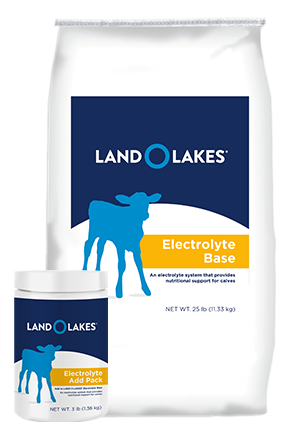
Maintain Healthy Calves by Reducing Pathogen Exposure
Calf : Health

One of the best ways to keep calves healthy and growing is to limit their exposure to harmful bacteria.
Even when calves who are exposed to disease pathogens do not become ill, they still exert valuable energy to fight off the disease.
Even when calves who are exposed to disease pathogens do not become ill, they still exert valuable energy to fight off the disease.
When calves are exposed to fewer environmental challenges, they have more energy to utilize toward feed conversion and weight gain. By reducing their exposure, we can help keep healthy calves, but also keep their energy focused on growth.
While most facilities have sanitation protocols in place, ensuring they are implemented and effective is key to maintaining a healthy calf environment focused on growth. We recommend reviewing facilities on a regular basis, preferably at least once a month.
To look beyond the surface and truly analyze the cleanliness of your facility, there are four important areas to consider:
1. Cleaning and sanitizing steps

Are employees spraying and wiping down items in one step? This might leave the item looking clean. However, harmful bacteria can still be lurking on the surface. Items must be cleaned of all organic matter (dirt, feces, etc.) before a cleaning solution can reach the bacteria and successfully sanitize the surface. To effectively reduce pathogen loads, be sure employees use two separate steps to clean and sanitize.
2. Equipment that needs attention
When evaluating cleaning and sanitization steps, it’s also important to review all of the necessary equipment. Key items to review are the wagon or cart that transports calves from maternity pens to hutches, bottles, buckets, nipples and esophageal feeders. Don’t forget to routinely sanitize cleaning tools as well.
3. Calf morbidity and mortality rates
High incidences could point to lurking bacteria and also be an indicator that cleaning protocols aren’t being implemented correctly, or the protocols in place aren’t effective and need to be revised. Identifying the source(s) of contamination is crucial to stopping disease spread, and reducing morbidity and mortality rates. Industry benchmarks suggest mortality should be less than 5 percent and morbidity should be less than 25 percent under 60 days of age.1
4. Third party audits
Bringing in an outside expert, such as a Purina Animal Nutrition Calf and Heifer specialist, to review facilities and protocols can often uncover problem areas that employees might be overlooking. Outside experts may have dealt with a similar problem on another farm and they often have access to additional resources that can help solve mysterious health problems and improve sanitation protocols.
By investing a little more time and resources to reduce pathogen exposure through stringent sanitation protocols, calf raisers can have healthier calves that utilize more energy toward growth. A recent study evaluating cleaning and sanitation methods showed that calves housed in properly cleaned and sanitized calf hutches had increased average daily gain.2
More work on this area is still needed, but improving the quality of a calf’s environment reduces its exposure to pathogens and results in a healthier calf that will convert feed to weight more efficiently.
Learn how one farmer sets his heifers up for success from day one.
Learn how one farmer sets his heifers up for success from day one.
1DCHA Gold Standards, 2009.




